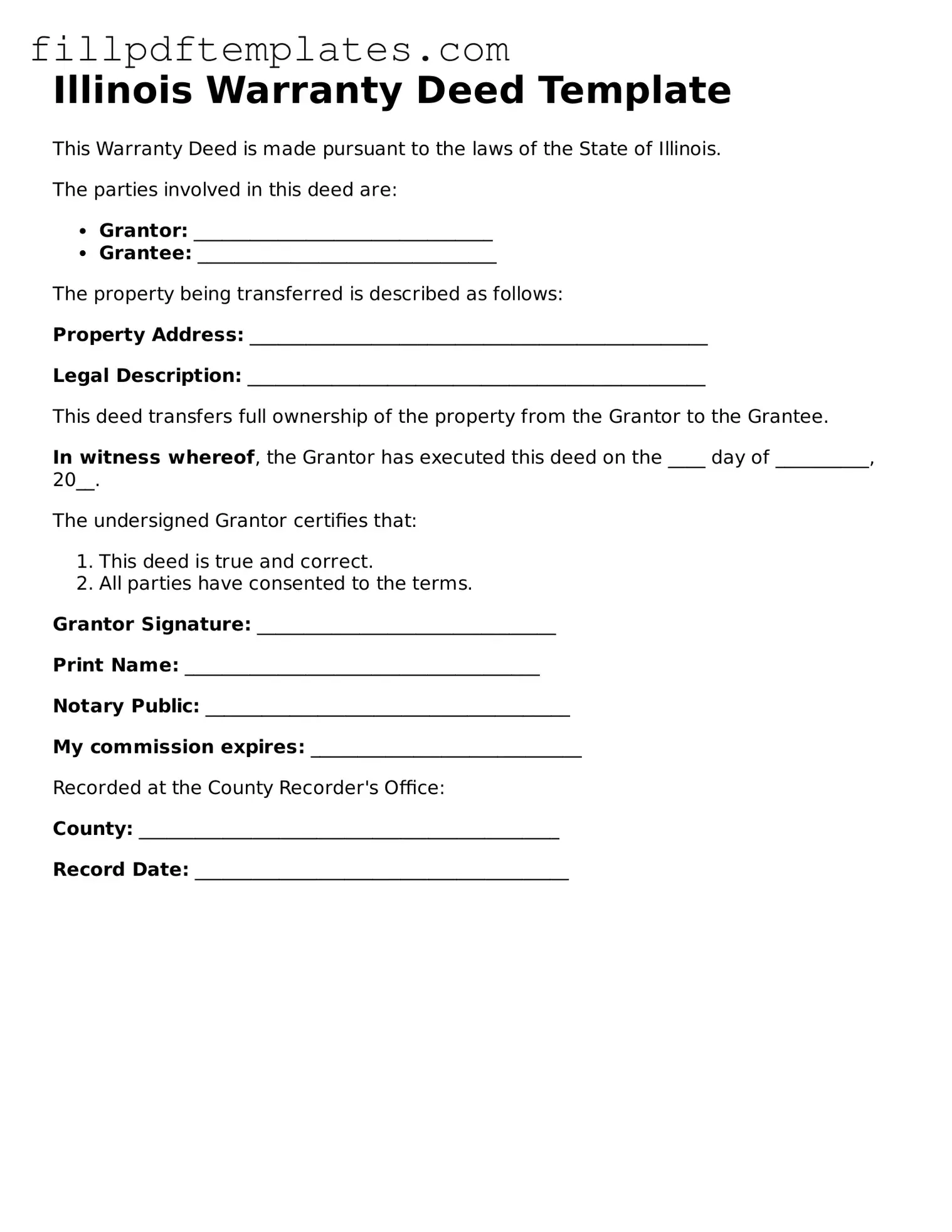Illinois Warranty Deed Template
This Warranty Deed is made pursuant to the laws of the State of Illinois.
The parties involved in this deed are:
- Grantor: ________________________________
- Grantee: ________________________________
The property being transferred is described as follows:
Property Address: _________________________________________________
Legal Description: _________________________________________________
This deed transfers full ownership of the property from the Grantor to the Grantee.
In witness whereof, the Grantor has executed this deed on the ____ day of __________, 20__.
The undersigned Grantor certifies that:
- This deed is true and correct.
- All parties have consented to the terms.
Grantor Signature: ________________________________
Print Name: ______________________________________
Notary Public: _______________________________________
My commission expires: _____________________________
Recorded at the County Recorder's Office:
County: _____________________________________________
Record Date: ________________________________________
